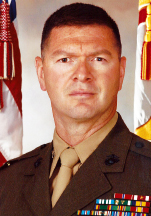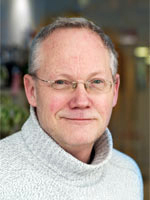10 Apr 2013
The DE systems conference in London discussed the need for education to promote wider appreciation of laser weapons.
As the US Navy announces that a high-power solid-state laser is set to be deployed on aboard the USS Ponce next year, the debate over directed energy weapons and systems continues apace.Last month, the tenth annual Directed Energy Systems (DES) conference, organized by Defence IQ and held in London, heard almost two dozen presentations on all of the key areas around the development of DES. Representatives from the military, academia and several commercial players agreed that in many cases the court is still out on approving laser-based weapons, although there are increasing signs that defensive and civilian deployments of directed energy systems are growing.
As with the previous year’s conference (also attended by optics.org), the hot ticket was the concluding panel discussion, which involved a variety of voices from the directed energy systems community.
The theme this year was “Next steps - Moving DES from the Drawing Board to the Operational Field”. The key speakers were: Col. Tracy Taffola (US Marine Corps Director, Joint Non-Lethal Weapons Directorate), Elizabeth Quintana (Senior Research Fellow, Air Power and Technology, of the Royal United Services Institute, UK), Dr Märten Risling, (Experimental Traumatology Unit, Karolinska Institutet, Stockholm, Sweden), and Dr Michael Cathcart, (Senior Research Scientist and Chief, Remote Sensing group, Georgia Tech Research Institute, Atlanta, GA).
The panel had to consider four key questions – all relating to the deployment of directed energy systems in military applications and what changes in government policy and in the understanding of wider society would be necessary for such changes to be effected and acceptable. In the following report, optics.org provides selected comments on the various questions under consideration.
Q1: Given the lack of deployment of the Active Denial system in Afghanistan what possibilities do we have for changing the mindset of policy makers on Directed Energy?

Col. Tracy Tafolla.
In our recent Joint Non-Lethal Weapons Directorate annual report we go into some of the DES myths and we have done some myth-busting. We have had to do that because just as important as telling the story of what directed energy is, we have to tell people what it is not. That is a critical element that we’re all going to have to face if we want to move forward.
There is a desire for these kinds of systems and the advanced technology and capabilities that they bring. However, I don’t know of any country right now that has an over-arching policy set endorsed by its political leadership and understood by the general public such that a commander feels that he’s not going to be the first one out of the gate and then not be fully supported if he deploys a DE system and wondering he’s going to face some sort of international tribunal.

Michael Cathcart.
The idea was that in a post-accepting directed energy weapons world, we might be working with a system that is not known to the wider community, so the idea of our work is to provide an educational policy for the period from high school through to military service academies.
We use DE systems all the time – as rangefinders designators, but when you star putting a name to things and associating them with lethal injury, pain and so on is when you start bringing up the weapons-related issues and arguments. Currently there are still no senior personnel out there who are able to take that first decision. Who will be the first person to take that risk and push that button?
TT: There is an effort by combatant commanders and the services to force the Office for Security Cooperation‘s hand into providing guidance on DE weapons. Nobody wants to be sinking a lot of money into R&D programs if we are not going to be allowed to use them. Each country is going to be different. As we sit around the table in some of the NATO working groups in which I have been working with, I got the same feeling – that there is not great policy established anywhere on DESs. We are going to have to consider that at some point in time.
Question from floor: Is there greater acceptability for civilian deployment of DES than for military deployment?
MC: I believe that if that this technology can be seen in a law enforcement role initially then the public will see that beneficial potential more than they will with a military application.
Considering the jail trial (a millimeter wave crowd management prototype in a jail in Los Angeles) the politicians in LA got around making a decision on permitting the DE system by not issuing the radio frequency license. This avoided having to consider whether the anti-personnel millimeter wave technology was acceptable or not. But I think as people get familiar with the technology then they will like it a lot better – look at what has happened with cell phone acceptability after initial consumer concern about handset radiation.
Q2: What considerations and qualifications for human safety are needed in order to gain general support for DEWs? and Q3: How can we promote the work and possibilities of Directed Energy on a larger more public scale?
MC: One of the issues that Colonel Tafolla raised earlier is that it seems to be OK for a conventional weapon to blow someone’s arm off but if you use a laser an blind someone then that is somehow more egregious.

Elizabeth Quintana
Generally, armies are professional and all that but at the same time doing a house search is a high adrenalin activity. I think people think about things as if it were happening to them and we are living in a free and open society and not a war zone. It’s a very different situation and you might consider things in a very different way. The Afghan people might see things in a very different way to the way that we in the West do.
Any new weapons system, these days, is going to come under a lot of public scrutiny. Because we have the Internet and everybody is very happy to share information and, of course, there will always be people who put out scare stories. But it’s true that you have to have consistent messaging, why it’s important, why you might need to use these systems.
I thought the CSBA [US Center for Strategic and Budgetary Assessments] report in 2012 into Directed Energy Weapons, was very interesting – describing using a third-party as a way of getting the messaging out, on why governments might need to continue to invest in such systems. So I think promoting DES is going to be a constant messaging issue.

Märten Risling.
Then there is the issue of political leadership. For example, we had discussions in Sweden a few years ago about the use of tasers by law enforcement. The police really wanted to have them because they were not happy with the lethal firearms alternative, which they have to use a few times every year with maybe one lethal incident per year.
But the political leadership always hesitates when this issue comes up. There might be two components: if they make the decision to accept such technology then they will be scrutinized by the newspapers and media every time there is a misuse or problem with the system – with a focus on the politician who introduced it. Then the second considering is financial. So there’s a complex problem to gain acceptability.
TT: We do so much work on potential human effects of DE weapons – to the point that it’s almost more acceptable to shoot someone with a conventional lethal system than with a non-lethal system. We’re always having to explain that battle.
There are other issues around DESs such as magazine capacity, and not having to resupply ordnance. So logistics footprint doesn’t have to be the issue. We come to these forums and most people are supportive of the developments associated with DE weapons. But overall, it’s going to require an education process that will go beyond the DES community.
EQ: I think the way that one looks at the way the nature of war has progressed even from Kosovo (1998-1999) to Libya (2011) – and consider the kind of targets that the military are looking at. In Kosovo, it was quite acceptable to hit power stations and bridges and similar constructions that were supporting the government. But in Libya such targets absolutely were not acceptable and these kind of DE systems – and cyber-warfare – are very popular because you can create effects without causing collateral damage. For the politicians it’s actually quite an easy win provided that you can prove that you can create the military effect that they need.
Whether there’s any longer-term damage, that needs to be managed, but, again, for a politician who wants to intervene, having a non-lethal weapon – and not dropping a conventional bomb – is quite attractive. Although it’s more difficult on the laser side. Politicians are living under the glare of 24-hour news media so, in some ways, the use of DE technologies is very attractive – providing it’s proportionate.

Massimo Annati.
But in a riot control situation the difference is the need to spray people with irritant or hydrant rather than deploying a weapon that could cause them permanent damage.
So for systems that are an alternative to lethal weapons, yes, I think that everybody should support that approach but for riot control equipment – for police-like equipment there is a long way to go because there is more concern about its use than support.
Q4: Are we likely to find more success with non-lethal DE systems than with lethal?
MC: As you have heard at this conference, counter-RAM (C-RAM, counter-rocket, artillery, and mortar) by directed energy systems has so far been sort of successful. At the same time you heard from Col Tafolla’s talk and others that the non-lethal side has some immediate applications but also that the military is looking for more success and wider acceptability.
TT: I think we can see success on both sides. Luckily for us, in most cases we don’t require the same kinds of power (as does C-RAM). But we are still facing the same kinds of issues, whether it’s thermal management of laser systems, or getting our propagating our signal out over the necessary range. With non-lethal developments, we face some added burdens that the lethal side doesn’t have to face.
The problem can be likened to the old Star Trek question of whether you can set the phasers on stun or on full power. Whether you have a full spectrum system that you can range up and engage with something and have either a non-lethal effect or crank the power up and blow a hole right through a target.
Every military individual that I know out there will tell you that’s what they want to have – a DE system that you can scale up rather than needing to carry a whole bunch of systems. We’re not there yet certainly, but I think that we’re going to find success with both [lethal and non-lethal], especially some of the laser systems and some of the higher power microwave systems that are coming on stream. It’s just a matter of applying our resources as best we can.
But in the case of when I have choice of putting lead across the bow of a ship and causing death or using a non-lethal approach and causing damage, given that choice, most captains will take a non-lethal approach whether it be microwave or laser. One is not in competition with another.
About the Author
Matthew Peach is a contributing editor to optics.org.
| © 2024 SPIE Europe |
|